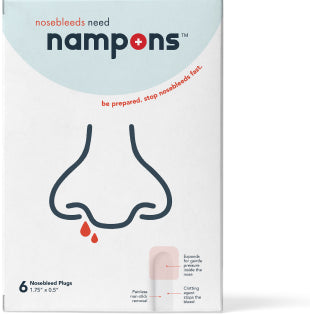Hereditary Hemorrhagic Telangiectasia (HHT) is a blood vessel disorder that's thought to affect between 1 in 5,000 and 1 in 10,000 people, with an estimated 60,000 sufferers in the United States (1).
Also known as Osler-Weber-Rendu (OWR), HHT is a genetic condition that typically causes frequent nosebleeds and can also cause bleeding of the digestive tract and pulmonary hypertension.
What Is Hereditary Hemorrhagic Telangiectasia (HHT)?
HHT was first described by William Osler, Frederick Parkes Weber, and Henri Jules Louis Marie Rend in the late 19th century, which is why it's also known as Osler-Weber-Rendu syndrome.
It is an autosomal dominant genetic disorder. This means that one copy of the gene can be passed from parent to child. If one parent has the condition but the other does not, the child will have a 50% chance of inheriting the disease.
It is not recessive and so it does not “skip a generation” like some other genetic disorders.
HHT is characterized by the abnormal formation of blood vessels, leading to arteriovenous malformations (vascular malformations in the brain, lungs, spine, GI tract, or liver) and telangiectasia (small red spots on the skin and in the nose and intestines).
What Does HHT Mean?
-
HHT = Hereditary Hemorrhagic Telangiectasia
- Hereditary = passed down, inherited.
- Hemorrhagic = from the Greek (via Latin) meaning "blood" and "burst", or to "bleed violently".
- Telangiectasia = a condition characterized by dilated capillaries, from the Greek "end", "vessel", and "dilation".
An individual with HHT is not always able to form blood vessels with normal capillaries between their arteries and veins. As a result, high-pressure arterial blood flows directly into low-pressure veins, increasing the risk of ruptures and bleeds.
What are the Symptoms of HHT?
Some HHT sufferers don't display any symptoms until their 50s and others are often misdiagnosed.
Recurrent nosebleeds are the most reported symptom and are thought to affect 9 out of 10 people with the disease. However, nosebleeds are common and occur in over 60% of the population. (2).
Even when they occur frequently, they can be dismissed as everything from high blood pressure and head/nose trauma to low humidity and nose-picking.
HHT affects multiple organs and may produce a number of symptoms, including:
- An inability to exercise for long periods
- Chronic fatigue
- Anemia
- Shortness of breath
- Bleeding of the gastrointestinal tract
- Back pain
- Seizures
- Strokes
- Heart failure
Telangiectasia
HHT sufferers often present with telangiectasia, small red spots that appear on the skin and inside the nose. When these spots rupture, they bleed, and that's what causes most HHT nosebleeds. Typically, these nosebleeds begin in prepubescence, but they can be delayed until adulthood.
The severity of these nosebleeds differs from case to case. When speaking to your physician about this issue you should explain the extent of the blood loss, how long it lasted, and whether there were any triggers.
Arteriovenous Malformations (AVMs)
AVMs can only be seen using imaging procedures such as MRI scans and CT scans. They are vascular malformations that commonly occur in the liver (roughly 75% of cases) and lungs (40%) of HHT patients, but also occur in the brain (10%) and spine (1%).
The risk of complications can vary greatly and the symptoms will depend on their location. For instance, spinal AVMs may produce back and upper leg pain while lung AVMs can cause shortness of breath, and brain AVMs lead to headaches and seizures.
Most AVMs are treatable and should be monitored closely to prevent complications.
What is the Treatment for HHT?
Although the underlying factors of HHT cannot be prevented, they can be treated, allowing sufferers to lead normal lives.
The prescribed treatment will depend on the patient's symptoms. For instance, if the patient is experiencing frequent heavy nosebleeds, a physician may recommend coagulation therapy, which coagulates the blood and reduces both the number of bleeds and the rate of blood loss.
A treatment known as embolization can also be used to block the artery. However, this is typically used as a last resort treatment during emergencies.
The least invasive way to reduce nosebleed frequency is to follow many of the tips we have previously outlined on this site, including:
- Don't pick your nose
- Apply a topical cream/saline spray to prevent the nose from getting too dry
- Avoid overly dry environments
The frequency of nosebleeds and gastrointestinal bleeding could cause iron deficiency, and so HHT patients need to be screened on a regular basis and treated accordingly. Treatment can vary from recommendations for a high iron diet to iron supplements.
A physician will also screen the patient to determine whether intervention is required for arteriovenous malformations (AVMs). If so, they may prescribe one of the following:
- Radiosurgery: Radiation is used to destroy the AVM tissue.
- Embolization: The blood flow to an AVM is stopped or reduced by inserting a small device/glue into the artery.
- Removal: Part of the problematic tissue is removed using laser therapy or surgery.
- Drug Therapy: Antibiotics, immunosuppressants, antifibrinolytics, and antiangiogenics may be used to treat AVMs.
What is the Life Expectancy of Someone with HHT?
A UK study found that patients with HHT had a slightly higher risk of mortality compared to a control group (77 years versus 80 years). This reduced life expectancy was attributed to an increased risk of heart failure, bleeding complications, and colon cancer. (3)
However, if the disease is detected early (via proper screening, questions about family history, etc.,) an individual with HHT can live a long and problem-free life.
Summary: Hereditary Hemorrhagic Telangiectasia
Hereditary Hemorrhagic Telangiectasia is an inherited genetic disorder that affects men and women from all racial and ethnic groups. It's rare, misunderstood, and often misdiagnosed, and while there is no cure, there are ways to treat HHT and reduce the risk of serious complications.



